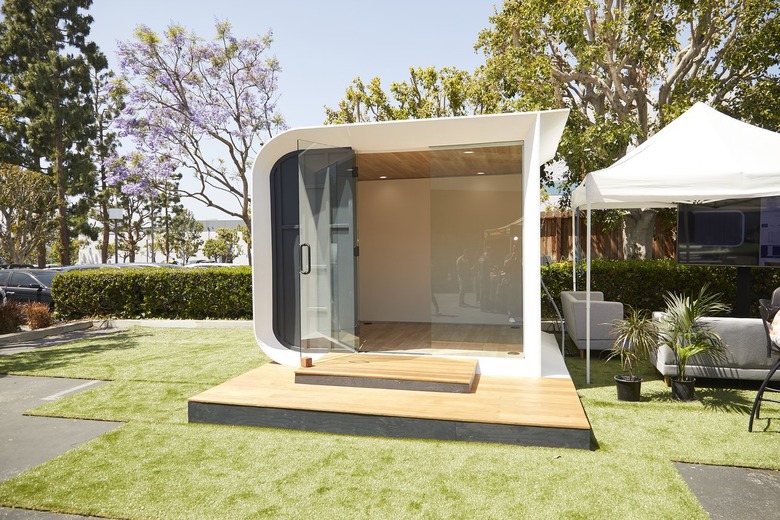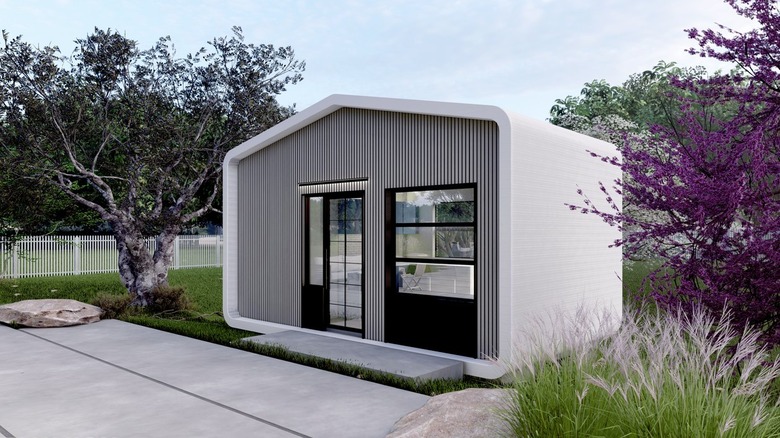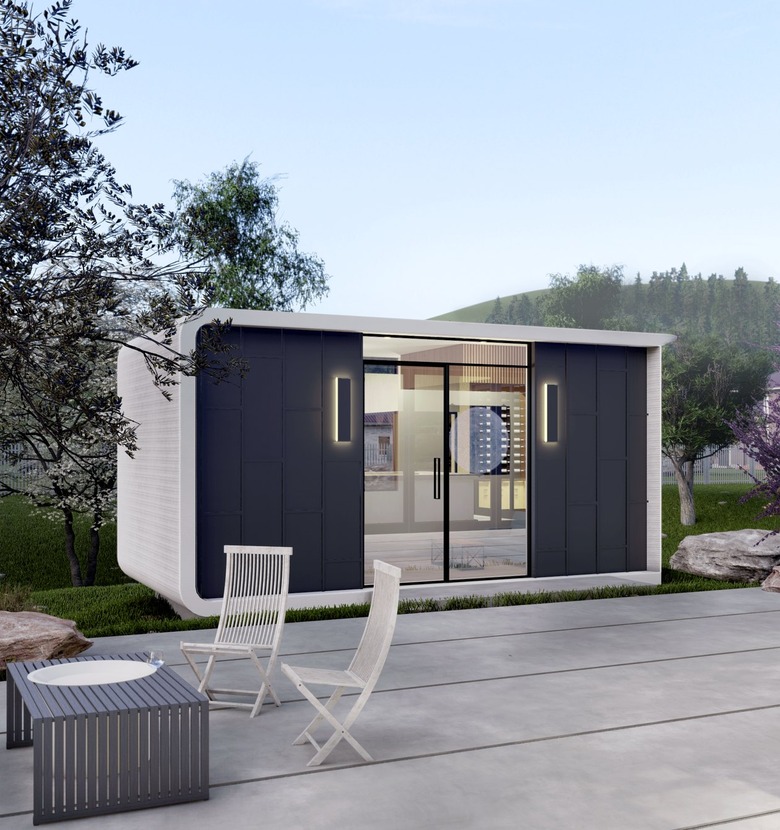Is 2023 Finally The Year For Sustainable 3D-Printed Homes?
Sustainability is the new gold standard in construction methods and materials. New home construction, and the construction industry as a whole, have long been one of the top consumers of our natural resources, some renewable and some not, and a leading producer of material waste.
However, the industry appears headed in a different direction and toward a new era. The construction industry has started and continues to make strides in sustainability, green building practices, reducing carbon footprints, and minimizing waste. Most interestingly, entire houses can now be constructed using similar technology used to create everyday 3D-printed objects.
The positive impacts of the trend are hard to hide. 3D home printing on a large scale could solve many challenges, such as labor shortages, increasing material prices, and construction delays that the new home industry consistently faces. Additionally, the technology could increase the availability of affordable housing to meet growing demand.
Though 3D-printed homes have long been touted as a fix for both sustainability and the housing affordability crisis, there is yet to be change on a mass scale. But, is 2023 the year for sustainable 3D-printed homes? We spoke with some experts and took a deep dive into the industry to learn about the beliefs, speculations, and vital factors affecting the new building method to try to make a determination.
What Is a 3D-Printed Home?
What Is a 3D-Printed Home?
Simply put, a 3D-printed home is a house that's built using a robotic arm extruder to create the structure one layer, or one part, at a time. The extruder can be a large machine on a steel frame that essentially draws the house in 3D, starting at the bottom and working its way up. Or, the home can consist of 3D-printed elements, like boards, planks, or studs, that are assembled on-site after printing. Completed 3D-printed structures are often a combination of the two techniques.
Although the most common material currently used in 3D-printed buildings is a concrete or similar material, the industry is exploring and developing new, less-traditional materials such as recycled plastics, organic materials, and industrial byproducts.
3D-Printed Homes Construction
3D-Printed Homes Construction
Printing a house may seem like an outlandish idea. It can be difficult to imagine that the 3D-printed, plastic-like toy you've seen could hold the key to home construction.
However, that's what's happening. The massive gantry frames and extruders that can build a home are virtually the same things as a tabletop 3D printer used to create tiny parts on a vastly larger scale.
Labor Requirements
The first money-saving concept behind 3D-printed homes is that they require less skilled labor to build. That's not to say that nobody needs to be on-site. Someone must still operate the machines, prepare the location, and install the finishes, windows, doors, plumbing, electrical, and other components. But entire teams of carpenters can be replaced with a single, reusable extruder that you can move from one site to the next.
That fact doesn't necessarily mean that skilled laborers will be out of work. However, they'll likely have less work to do on individual projects while having more projects to work on due to the increased speed of construction.
Material Options
The current most common building material in 3D-printed home construction is a unique blend of cement, fibers, fine aggregate, and polymers. Although making cement and concrete has a significant carbon footprint, the fact that 3D printing using the material creates almost no waste on-site is already a huge step toward sustainability.
While concrete mixes are the most common material, more green-building materials are being developed and used in many cases to create even more sustainable building methods.
3D-Printed Home Sustainability
3D-Printed Home Sustainability
3D home printing addresses the growing need for sustainable building practices in numerous ways. Besides reducing waste, printing a house has the potential to dramatically increase the use of natural materials and recycled materials, as well as reduce carbon footprints and energy use.
Ron Barnoy, the head of growth at Azure Printed Homes, a company focused on sustainability in 3D-printed houses, tells Hunker, "3D printing can enable the use of sustainable and environmentally friendly materials, such as recycled plastics. This can reduce the carbon footprint of construction and improve the overall sustainability of homes. Recycled plastics in 3D printing can significantly reduce the amount of plastic waste that ends up in landfills, oceans, and the environment."
According to Barnoy, 3D-printed homes can also be designed to be more energy-efficient, with features such as improved insulation. This can reduce energy consumption and carbon emissions associated with heating and cooling homes.
And, if that's not enough to convince skeptics, Barnoy says, "3D printing with recycled plastics can result in the creation of materials that emit fewer volatile organic compounds (VOCs), which can contribute to improved indoor air quality in homes." Ultimately, this makes it easier to live in our homes.
How 3D-Printed Homes Pros
How 3D-Printed Homes Pros
"Overall, 3D printing technology has the potential to revolutionize the construction industry and provide new solutions for affordable and sustainable housing," says Barnoy. And there's little evidence that his prediction won't materialize in the near future. Here's how 3D-printed housing construction stacks up against traditional home building from a practical standpoint:
3D-Printed Home Costs
The cost to build a 3D-printed home seems to depend on who you ask. Around this time last year, some experts estimated the cost to construct a 3D-printed home from the ground up was between 20% and 40% less than a similar size home built with conventional construction methods (the average cost to build a home in 2022 was around $285,000).
However, the current estimated cost of 3D-printed home creation is closer to around 15% less than stick-built structures, with hopes of increasing that percentage to 30% in 2023.
3D-Printed Home Speed
With less dependence on human labor than typical house-building, it's unsurprising to learn that a 3D-printed home requires less time to construct. However, the speed may still surprise you.
Once the site is prepared, and the printing equipment is in place, the foundation and walls of an entire home can be constructed and ready for roofing, windows, and doors in under 24 hours— compared to the several-month process of building a house the old way, that's quite an improvement.
3D-Printed Home Availability
With buildings, homes, and developments already being completed in Texas, Virginia, Dubai, and parts of Mexico, among several other places, 3D-printed homes aren't just a passing fad in the western hemisphere.
We spoke with Tushar Joshi, the Head of Marketing for Tvasta, the company that designed, developed, and built the first 3D-printed home in India. On printed house availability, he tells Hunker, "The real estate market is completely different from country to country, but 3D printing, with its unique advantages, can address all of these markets in the long run."
He continues, "We have seen a lot of positive responses from a premium segment of the market, whereas the majority of homeowners and builders are a bit hesitant to rely on new technology. We are very satisfied with the [Indian] government's response to this technology. We believe that we can address this market requirement with this technology soon."
So, if you're waiting to get your hands on your own 3D-printed home, you likely won't have to wait too long. But, standard construction homes are vastly more abundant — and it's too soon to tell how long that will be to change in the U.S. housing market.
3D-Printed Home Buyer Benefits
Although there are numerous benefits for consumers should they choose to purchase a 3D-printed home over a traditional stick-built structure, the immediate rewards will include lower construction costs, which translate into a lower purchase price per square foot, increased energy efficiency, and an ever-increasing ability to fine-tune the 3D building process relating to customization options.
"[Homebuilders and buyers] are excited about the potential for greater customization and faster construction times, while others are drawn to the potential cost savings and environmentally friendly aspects of 3D printing technology," Barnoy says.
3D-Printed Home Cons
3D-Printed Home Cons
New technology can have downsides too. Despite the promise of increased sustainability, lower energy use, affordability, and speed, some hurdles remain as 3D home printing moves out of the testing phase and into the consumer market. It doesn't take a lot of skepticism to recognize the challenges.
Building Code
The first building permit for a 3D-printed home in the U.S. was in Austin, Texas, just five short years ago. A brand-new building method and product such as 3D printing must work within the confines of current building codes while trying to convince government jurisdictions to change and adapt to the new construction.
Barnoy looks at the situation this way: "As more successful 3D-printed home projects are completed, we can expect to see an increase in the adoption of the technology by homebuilders, governments, and homeowners. This could lead to greater standardization and more widespread use of 3D printing in the home building industry."
In other words, the necessary changes are coming.
Practical Hurdles
Another challenge to the new building method is practicality. Current 3D printing equipment is costly to build, challenging to ship, and too large to be practical in densely populated areas where affordable housing is an ongoing need that printing homes could address. Also, the extruded materials still have limited appearance variations.
However, as expected, solutions are in the works for these practical challenges. Alternative building materials are being tested and even used in some cases. New business partnerships across the globe will mean more interest among engineers and investors to create solutions for any hurdles.
The Future of 3D Home Construction
The Future of 3D Home Construction
Is 2023 the year it all happens? If pioneers like Barnoy and Joshi have their say, it sure looks that way.
Tushar tells Hunker, "We can see more automation in the construction sector, where homeowners will have complete control over their houses. The structures will be more durable and sustainable."
Though there are still challenges facing the 3D-home industry, "We can expect to see more initiatives and partnerships aimed at leveraging 3D printing technology to address this issue," Barnoy says.
By the end of 2023, it's likely we won't be overrun by 3D homes. However, as the industry continues growing into adolescence, it does so while checking off a lot of boxes focused on sustainability. As the technology continues to develop and more companies take on the challenge, we're sure to see its rapid growth accelerate even more this year.


